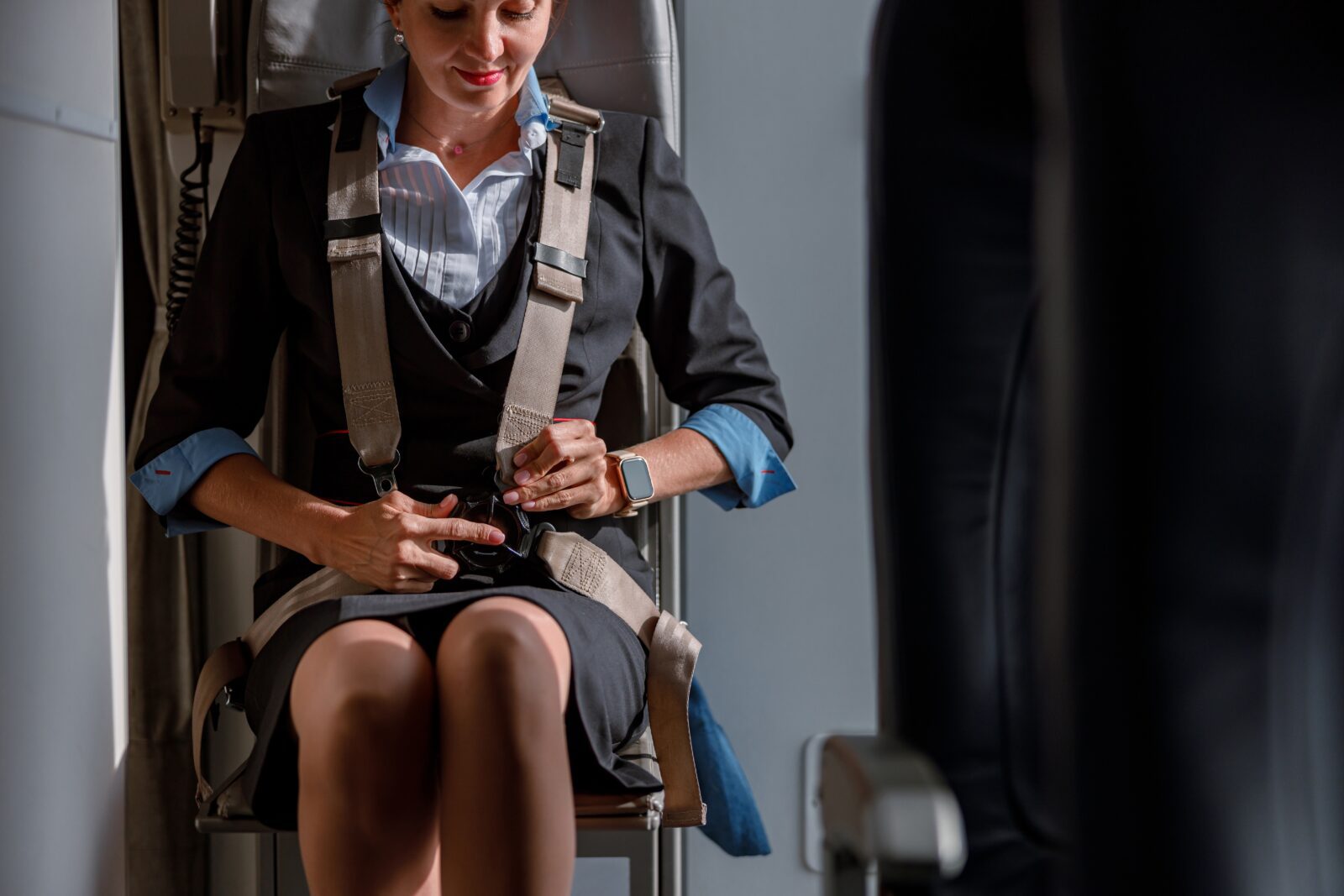
Crew Insider is our series of informative articles that answer some of the most common and less common questions about the aviation industry from the point of view of an industry insider. Our question answerer-in-chief is Mateusz Maszczynski, who has worked in the airline industry for nearly two decades and has honed his expertise in the field through this blog since 2015.
There’s been a rash of articles recently explaining that flight attendants typically sit on their hands during takeoff and landing because it’s a type of protective ‘brace position’ designed to keep them safe in case of an unexpected accident.
What all of these articles fail to explain, however, is that the current research (and we’re talking more than 16 years old at this point) has concluded that the sitting on hands position that you’ve read about isn’t that safe after all.
Research into protective ‘brace-for-impact’ positions (as the International Civil Aviation Organization describes them) has been ongoing since the 1960s, using crash test dummies to determine the brace position most likely to keep passengers and crew safe in the event of a crash.
Despite the common misconception amongst the public that an aircraft crash is going to result in near-certain death, research by the National Transportation Safety Board (NTSB) found that between 1983 and 2000, around 96% of passengers and crew survived a crash landing.
One of the main reasons cited by researchers for such a high survival rate was the development of the brace-for-impact position, which is designed to stop limbs from flailing around in a high-speed impact and protect the head from blunt force trauma.
Many of the studies that have looked at brace-for-impact positions have focused on passengers sitting in forward facing economy seats but there is still an ample amount of research into the most effective brace position for flight attendants.
The reason that brace-for-impact positions for flight attendants differ from passengers is that they are already restrained by a four-point harness rather than a lap belt and because jumpseats are far more upright and can face both forwards and aft.
In the past some airlines really did mandate that flight attendants sit on their hands for takeoff and landing because, at the time, this was believed to be the most effective brace and semi-brace position to keep crew members safe in the event of a crash.
That position, while still used by some airlines who still haven’t got around to updating their standard operating procedures, is no longer recommended by ICAO which regulates the civil aviation industry at a global level on behalf of the United Nations.
In its most recent policy document on the subject, the 2018 Manual on Information and Instructions for Passenger Safety, policymakers recommend just two brace positions for cabin crew members.
The positions were adopted from a 2007 study by German crash researchers commissioned by the country’s Federal Ministry of Transport.
One position is just for forward-facing crew jumpseats, and the second position is for aft-facing crew jumpseats. Neither of these positions suggests that flight attendants sit on their hands at any point.
In the forward-facing position, flight attendants rest their hands on top of their thighs and place their chin on their chest with their legs stretched slightly forward but with their feet flat on the floor.
In the aft-facing position, flight attendants cross their arms in front of their chest, with their heads firmly against the headrest and their knees at a 90-degree angle with feet flat on the floor.
ICAO says that cabin crew shouldn’t be holding anything in their hands during takeoff and landing, just in case an unexpected incident occurs that would require them to reach for the public address system or release themselves from their harness.
Many airlines require flight attendants to adopt a sort of relaxed brace position during takeoff and landing in the event of an emergency. Not only is this ‘semi-brace’ position meant to ready a flight attendant to react quickly to an incident, but it also heightens their mental model of what could occur and is designed to enhance their situational awareness.
Related
This is the Real Reason Why Flight Attendants Turn The Lights Off For Takeoff and LandingIn "Airline News"
Why Do Airlines Tell You to Open Your Window Shades For Takeoff and Landing? And Why the United States is UniqueIn "Airline News"
Why Do Gate Agents and Flight Attendants Describe a Flight as ‘Completely Full’… Surely You Can’t Get Fuller Than FullIn "Airline News"
Mateusz Maszczynski honed his skills as an international flight attendant at the most prominent airline in the Middle East and has been flying ever since... most recently for a well known European airline. Matt is passionate about the aviation industry and has become an expert in passenger experience and human-centric stories. Always keeping an ear close to the ground, Matt's industry insights, analysis and news coverage is frequently relied upon by some of the biggest names in journalism.








I went through flight attendant training at American Airlines in the summer of 2001……
We were specifically told that sitting on your hands had been the standard American brace position until the AA Little Rock crash when the jumpseats collapsed and the flight attendants’ hands were broken.